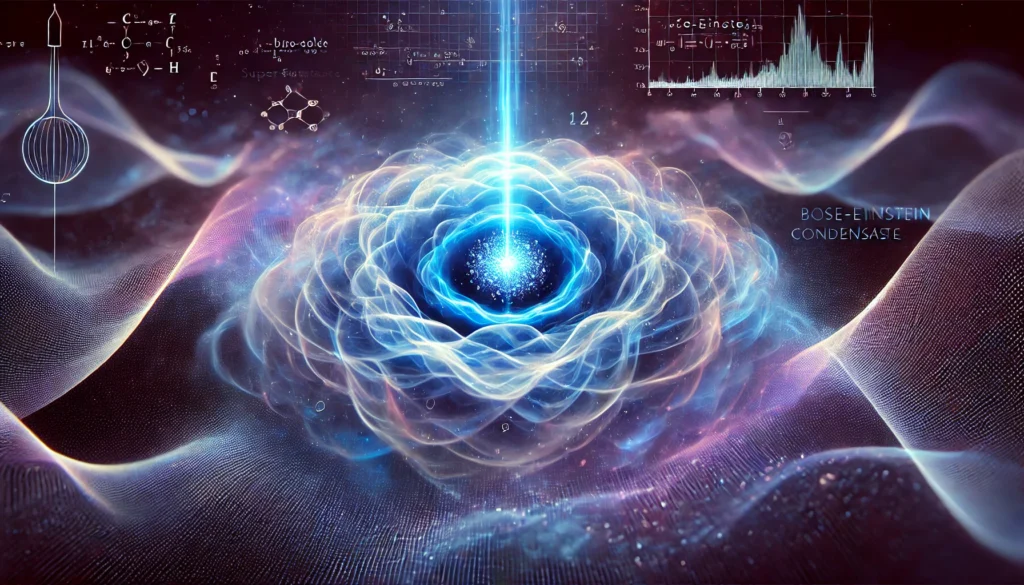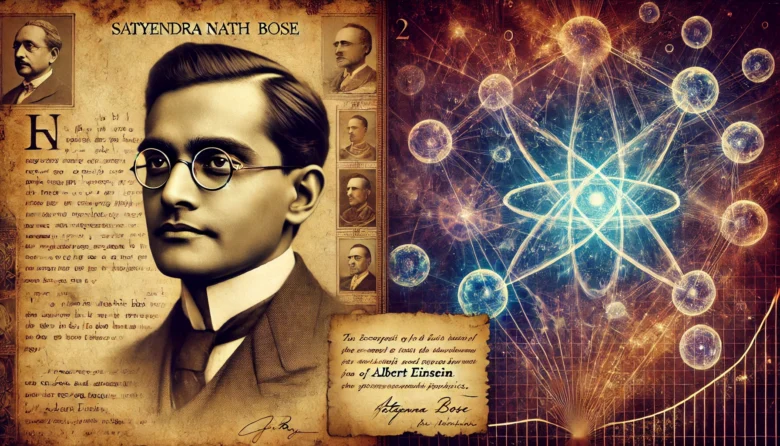Satyendra Nath Bose: The Indian Genius Who Revolutionized Physics
Did you know that the term “boson,” a fundamental particle in quantum physics, is named after the Indian scientist Satyendra Nath Bose?
Satyendra Nath Bose (1894–1974) was not just a physicist; he was a trailblazer whose work laid the foundation for modern quantum mechanics. His collaboration with Albert Einstein became one of the most fascinating partnerships in the history of science. This blog centres around a captivating story of how Bose’s courage and tenacity brought him to Einstein’s attention, revolutionizing physics forever. Let’s delve into this remarkable tale and its enduring legacy.
The Story That Changed Physics
Bose’s Bold Move
In 1924, Satyendra Nath Bose was working as a lecturer at the University of Dhaka. While teaching Planck’s law of radiation, he realized that contemporary theories failed to account for certain behaviours of particles like photons. He developed a revolutionary statistical method to address these inconsistencies. However, when he submitted his paper to a prominent scientific journal, it was rejected.
Rather than giving up, Bose made an audacious decision: he sent his paper directly to Albert Einstein, one of the most respected scientists of the time. In his cover letter, Bose humbly requested Einstein to review his work. He even wrote, “Though a complete stranger to you, I do not feel any hesitation in making such a request because we are all your pupils.”
Einstein’s Response
To Bose’s surprise and delight, Einstein not only reviewed the paper but was profoundly impressed by its originality. He translated it into German and submitted it to the prestigious journal Zeitschrift für Physik under their joint authorship. This marked the beginning of Bose-Einstein statistics, a groundbreaking framework that describes the behaviour of bosons—particles that follow these statistical rules.
During this time, Bose famously remarked, “I do not care whether I am forgotten. My work will live on.” This statement reflected his humility and unwavering faith in the significance of his contributions to science. To Bose’s surprise and delight, Einstein not only reviewed the paper but was profoundly impressed by its originality. He translated it into German and submitted it to the prestigious journal Zeitschrift für Physik under their joint authorship. This marked the beginning of Bose-Einstein statistics, a groundbreaking framework that describes the behaviour of bosons—particles that follow these statistical rules.

The Ripple Effect
This collaboration did more than earn Bose global recognition; it revolutionized quantum mechanics. Concepts derived from Bose’s work led to the discovery of phenomena like Bose-Einstein condensates, a unique state of matter observed at ultra-low temperatures. Decades later, the Higgs boson, often referred to as the “God particle,” would validate Bose’s contributions to particle physics.
Beyond Quantum Mechanics
Contributions Across Disciplines
While Bose’s most celebrated achievement lies in quantum mechanics, his curiosity spanned multiple fields. He worked on statistical mechanics, X-ray crystallography, and even theoretical chemistry. His interdisciplinary approach reflected his belief that science knows no boundaries.
Role as a Mentor
Bose’s impact extended beyond research. As a professor, he inspired countless students to think critically and creatively. At the University of Dhaka, he often encouraged students to challenge established ideas, fostering a spirit of inquiry that many credited for their own scientific achievements.
Interesting Anecdote: The Language of Science
It is said that Bose once delivered a lecture entirely in Bengali to make advanced science accessible to the local population. He believed knowledge should not be restricted by language barriers, a philosophy that made him beloved by his students and peers.
Recognition and Legacy
Honours and Awards
Despite his groundbreaking contributions, Bose never won a Nobel Prize. Yet, his legacy was immortalized when particles that obey his statistics were named bosons. In 1954, the Indian government recognized his contributions by awarding him the Padma Vibhushan, the country’s second-highest civilian honour.
Influence on Modern Physics
This collaboration did more than earn Bose global recognition; it revolutionized quantum mechanics. Concepts derived from Bose’s work reshaped quantum mechanics and paved the way for the discovery of phenomena like the Higgs boson, validating the significance of his contributions. Decades later, the Higgs boson, often referred to as the “God particle,” would validate Bose’s contributions to particle physics.
Lessons from Satyendra Nath Bose’s Life
Courage to Challenge Norms: Bose’s decision to reach out to Einstein demonstrates the importance of believing in one’s ideas.
Interdisciplinary Curiosity: His work across various scientific domains highlights the value of exploring diverse fields.
Inclusivity in Knowledge: Bose’s efforts to make science accessible to all underline the importance of breaking barriers in education.
Conclusion
Satyendra Nath Bose’s life story is a testament to the power of persistence, innovation, and collaboration. His daring move to contact Einstein not only changed his life but also reshaped the trajectory of modern physics. As we celebrate his legacy, let us remember the value of curiosity and the courage to pursue our ideas, no matter how unconventional they may seem.
What bold step will you take today to bring your ideas to life?
Author’s Note
Satyendra Nath Bose’s story is a powerful reminder that breakthroughs often come from thinking differently and acting boldly. I hope his journey inspires you to embrace challenges and explore the unknown.
G.C., Ecosociosphere contributor.
References and Further Reading
- Satyendra Nath Bose Biography – Encyclopedia Britannica
- Bose-Einstein Statistics Explained
- Satyendranath Bose: Higgs-Boson’s forgotten hero – news.BDTV.in. http://news.bdtv.in/2012/07/satyendranath-bose-higgs-bosons.html
- Bogavac, D. (2018). Searches for supersymmetric particles decaying to W and Higgs bosons in events with an isolated lepton with the ATLAS detector. https://core.ac.uk/download/378493860.pdf





Comments
helloI like your writing very so much proportion we keep up a correspondence extra approximately your post on AOL I need an expert in this space to unravel my problem May be that is you Taking a look forward to see youHABANERO88
“Amazing post, keep up the good work!”
Hi my loved one I wish to say that this post is amazing nice written and include approximately all vital infos Id like to peer more posts like thisHABANERO88